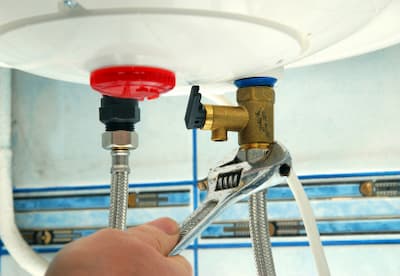How to Extend the Lifespan of Your Home's Hot Water System By Maintenance
How to Extend the Lifespan of Your Home's Hot Water System By Maintenance
Blog Article
We've noticed the article relating to What Kind of Maintenance Do Water Heaters Need? below on the net and felt it made sense to quickly share it with you on this site.

Hot water is essential for everyday convenience, whether it's for a refreshing shower or washing dishes. To guarantee your warm water system runs efficiently and lasts much longer, normal maintenance is crucial. This article gives practical ideas and understandings on how to preserve your home's warm water system to avoid disruptions and costly repair services.
Intro
Maintaining your home's hot water system may appear challenging, however with a few easy actions, you can guarantee it operates smoothly for many years to find. This overview covers everything from comprehending your warm water system to do it yourself upkeep tips and knowing when to employ specialist assistance.
Value of Keeping Your Warm Water System
Regular maintenance not only extends the life expectancy of your warm water system however also ensures it operates successfully. Overlooking maintenance can bring about decreased effectiveness, greater power costs, and even early failing of the system.
Indications Your Hot Water System Requirements Maintenance
Understanding when your warm water system requires interest can stop major issues. Look out for signs such as inconsistent water temperature, strange noises from the heater, or rustic water.
Flushing the Water Heater
Flushing your water heater removes debris build-up, boosting efficiency and prolonging its life.
Monitoring and Changing Anode Rods
Anode poles stop rust inside the storage tank. Examining and changing them when worn is important.
Complicated Issues Requiring Specialist Aid
Instances consist of major leakages, electric issues, or if your water heater is consistently underperforming.
Regular Expert Upkeep Advantages
Expert maintenance can include detailed examinations, tune-ups, and making sure compliance with security standards.
Evaluating and Changing Temperature Setups
Changing the temperature setups makes sure ideal efficiency and security.
DIY Tips for Upkeep
You can carry out several upkeep jobs yourself to maintain your hot water system in leading condition.
Looking for Leaks
Regularly evaluate pipelines and connections for leakages, as these can lead to water damages and higher costs.
Understanding Your Warm Water System
Prior to diving into upkeep jobs, it's practical to understand the fundamental components of your warm water system. Generally, this includes the water heater itself, pipelines, anode rods, and temperature level controls.
Monthly Upkeep Tasks
Regular regular monthly checks can assist capture minor concerns before they rise.
Checking Stress Alleviation Valves
Examining the stress relief valve ensures it operates correctly and protects against excessive pressure accumulation.
Shielding Pipes
Shielding warm water pipes minimizes heat loss and can conserve energy.
When to Call an Expert
While do it yourself maintenance is useful, some concerns require expert knowledge.
Verdict
Regular maintenance of your home's warm water system is crucial for efficiency, durability, and price savings. By complying with these pointers and knowing when to seek expert assistance, you can make certain a dependable supply of warm water without unexpected interruptions.
Water Heater Maintenance Tips
Test the TPR Valve
Shut off the power and the cold-water supply valve. Place a bucket under the pipe connected to the temperature-pressure-release (TPR) valve on the top or side of the tank. (This valve opens if the tank pressure gets too high.) Lift the valve’s tab to let some water out, then let go. If water keeps flowing, drain the tank partway, unscrew the old valve with a pipe wrench, and install a new one. Check the Anode Rod
Put a hose to the tank’s drain cock and let out a few gallons of water. Now fit a 1 1/16-inch socket onto the rod’s hex head on top of the heater (or under its top plate) and unscrew the rod. If it’s less than ½ inch thick or coated with calcium, buy a new one, wrap its threads with Teflon tape, put it back in the tank, and tighten securely. Use this segmented rod if headroom above the tank is limited. Drain the Tank and Wash Out Sediment
Drain the remaining water in the tank into the bucket, then stir up the sediment on the tank’s bottom by briefly opening the cold-water supply valve. Drain and repeat until clean water comes out of the hose. Close the drain cock, refill the tank, and turn its power back on. Adjust the Temperature
Find the temperature dial on the side of the tank and unscrew its cover. Adjust the dial to 120 degrees using a flathead screwdriver. For every 10 degrees the temperature is lowered, you can expect to save up to 5 percent in energy costs. Turn the water heater off or the thermostat down to its lowest setting if you plan to be away from home for more than three days. Insulate the Pipes
Buy some self-sticking 3/8-inch-thick foam pipe insulation that matches the pipes’ diameter. Slide the foam over the hot-and cold-water pipes as far as you can reach. Insulating the cold-water pipe prevents condensation in summer. Peel the tape and squeeze the insulation closed. If the pipe is 6 inches or less from the flue, cover it with 1-inch-thick unfaced fiberglass pipe wrap. https://www.thisoldhouse.com/plumbing/21016402/how-to-maintain-a-water-heater

I was shown that write-up about Water Heater Maintenance Tips You Can't Afford to Forget from an acquaintance on a different site. If you please take the opportunity to distribute this blog post if you liked it. Thank you for your time. Come back soon.
Schedule Now! Report this page